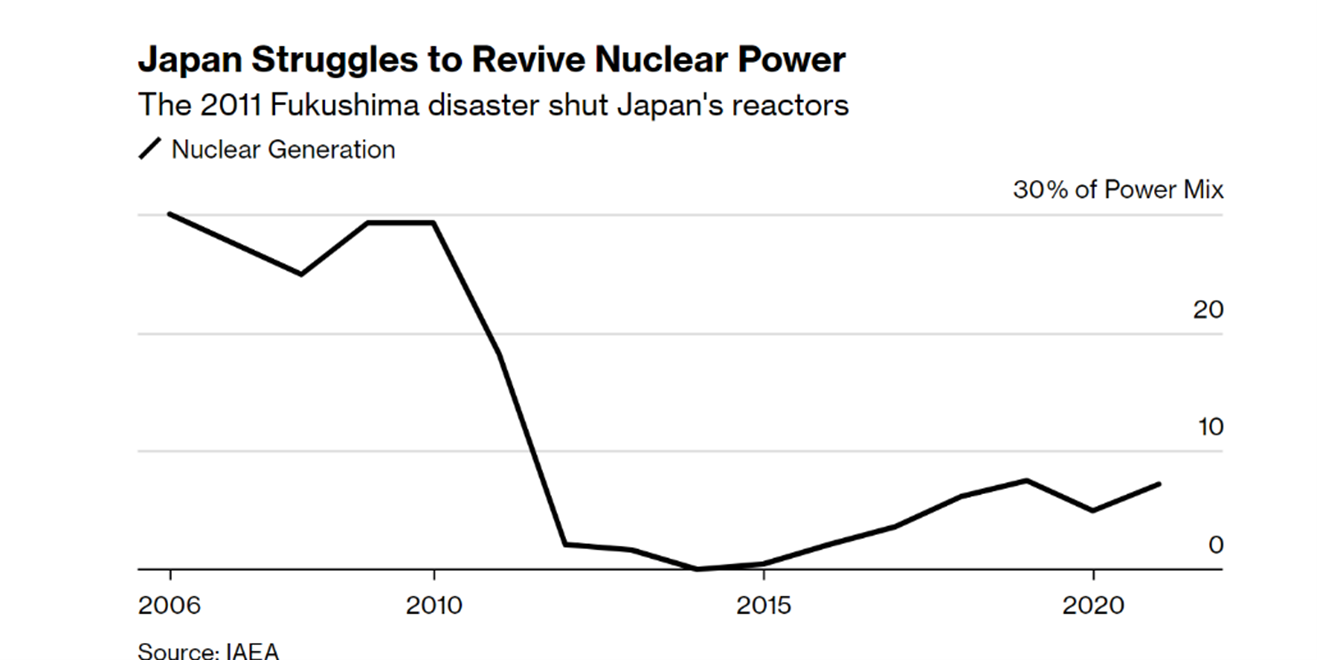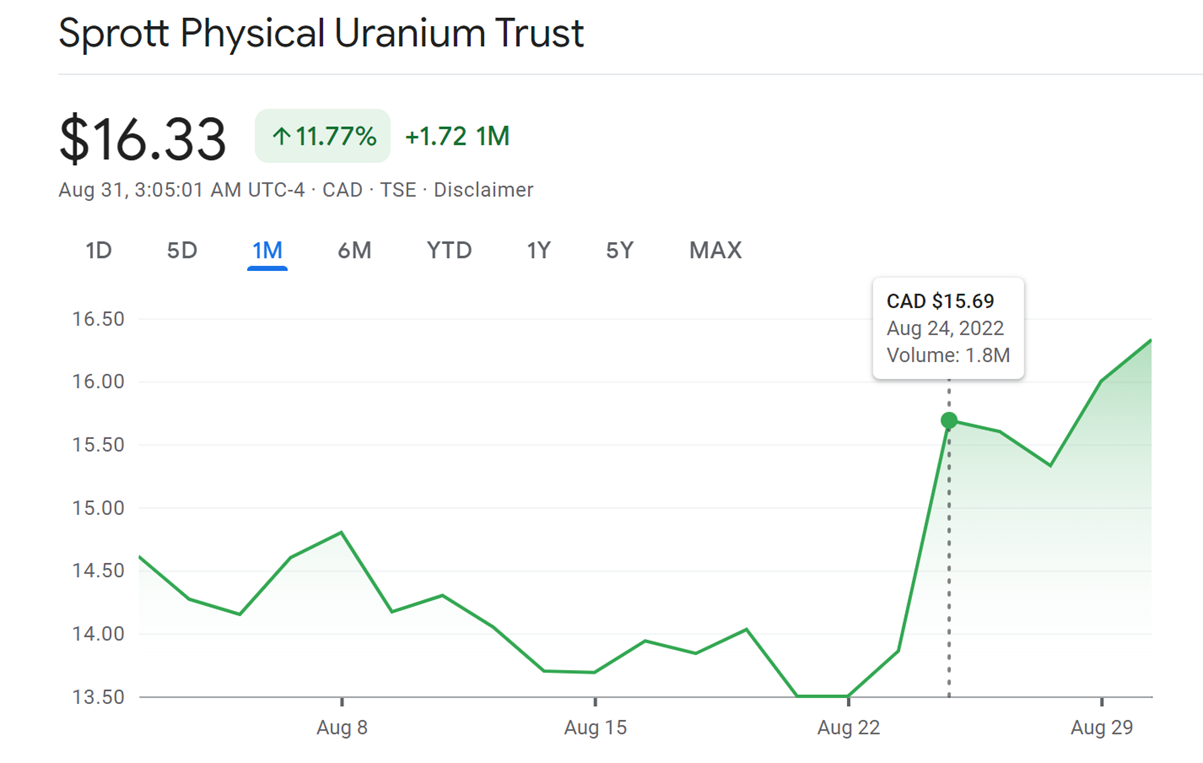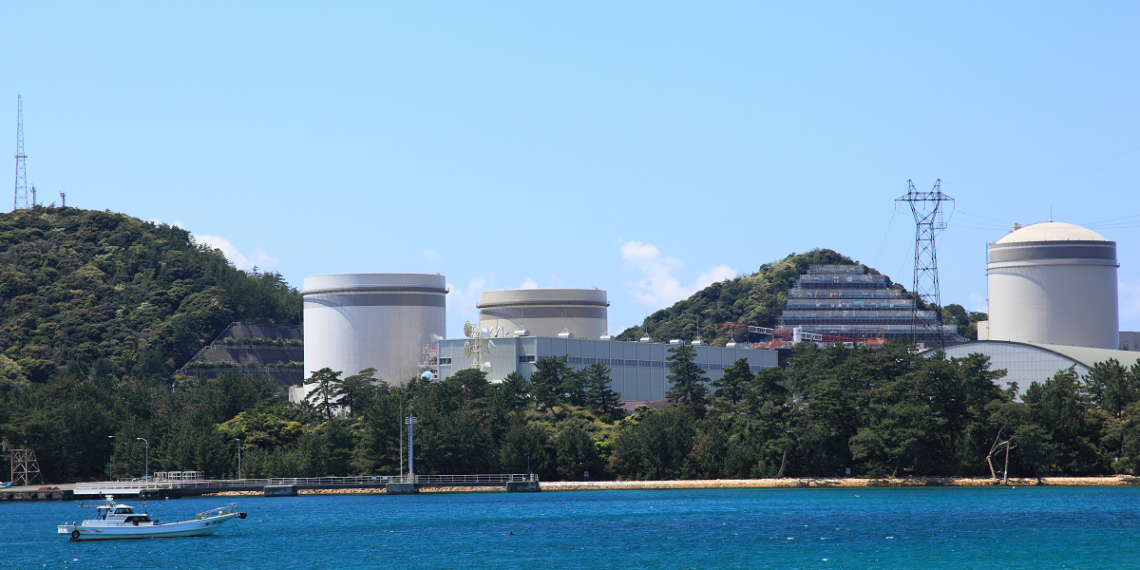Despite the sharp rise in anti-nuclear sentiments following the 2011 Fukushima disaster, Japanese Prime Minister Fumio Kishida, in a drastic policy shift, has urged his government to consider installing a new generation of nuclear reactors.
The popularity of nuclear power in the country has waned since the Fukushima disaster of 2011, as demonstrated in the graphic below.

Now, however, the impact of the Ukraine war, in conjunction with progressively spiralling energy costs, has highlighted the need for the diversification of energy sources, with more and more countries re-considering the switch to nuclear.
Together with the construction of new reactors, Kishida also stated during an energy policy meeting, that the country would look to re-implement mothballed nuclear plants and extend their lifespans, in a collective effort to reach Japan’s goal of attaining carbon neutrality by 2050.
“For this winter, I have directed [Minister of Economy, Trade, and Industry, Koichi Hagiuda] to proceed with the operation of up to nine nuclear reactors, which are equivalent to roughly 10% of Japan’s total electricity consumption volumes,” Kishida said at a news conference.
Prior to the Fukushima disaster, Japan maintained a spot in the “big six” of nuclear countries, with France, Germany, Japan, Russia, South Korea, and the U.S. generating over 70% of all nuclear energy around the world. Now, according to Bloomberg, governments in Japan and South Korea are eliminating anti-nuclear legislation, and countries such as China and India are implementing the construction of more reactors to avert future supply scarcities and curb emissions.
As one of the previous major exponents of nuclear energy, with a previous total of 50 nuclear plants in operation, it comes as no surprise that uranium prices have sharply risen in the wake of Kishida’s comments.

The Sprott Physical Uranium Trust graph depicted above, shows a drastic incline in uranium prices on 24 August 2022. Whilst we cannot assume that the spot prices of uranium have directly sky-rocketed due to Prime Minister Kishia’s remarks made on the same day, it’s no coincidence that as more and more world leaders turn to nuclear energy, naturally uranium prices will bolster.
S&P also reported that uranium is in store for a record year, with industry veterans stating that uranium prices ought to rise even more to entice pervasive mine renewals or capital-intensive mine builds. Furthermore, a uranium deficit is already prevalent, meaning previously decommissioned mines owned by uranium mining companies, such as Paladin (ASX: PDN), are bouncing back in the wake of a new nuclear renaissance.
Paladin is reportedly re-starting its Langer Heinrich Mine, located in Namibia, as well as moving into exploration due to the recent strengths of the company’s offtakes. S&P reports that there are nearly 500 reactors presently operating or under construction. In the U.S., nuclear energy accounts for almost half of the country’s carbon-free electricity production, while China has committed around 150 nuclear reactors for construction over the next 15 years.
These statistics, alongside countries such as Japan embracing nuclear energy, indicates that the deficit is only going to continue to magnify. How it will pan out, however, remains to be seen.












